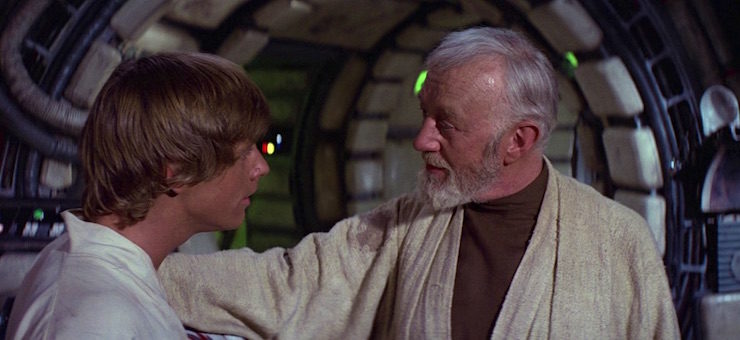FREE Film School: The Hero’s Journey, Story Structure
Even if your ambition is to shoot other people’s screenplays, you should still understand story structure. While I don’t agree the story is the most important thing in a movie (it’s equally important), it’s certainly the most often missing element from self-funded movies. And, remember, most of your filmmaking heroes at least started out writing their own scripts.
If you’re aspiring to be a film director, don’t say “it’s not my department”. Because every department is your department. That’s the challenge of it. In addition, if you have more knowledge of how cameras work than how stories work, then I would question your ambition. You might be better off in the camera department of a film production (which is not a bad thing).
Let me ask you a question…
Do you find every other element of the filmmaking process more interesting than the story part? Because, while filmmakers do have to deal with a lot of technology, a film director’s job is above all to tell a story. If you want people to be watching your movies 20 or 100 years from now, it’s the human truth at the heart of the story which will carry it.
That’s why Shakespeare’s plays are still being used to make movies today. Historians can’t tell you too much about Shakespeare’s working practices. But I can assure you he was obsessed with stories above set carpentry or acting technique (even though he was an actor).
“Screenplays are structure, and that’s all they are.”
Oscar-winning, legendary screenwriter William Goldman said, “Screenplays are structure, and that’s all they are.” But like with anything so simple, direct and conclusive, it can’t possibly be true can it?
If screenwriting was nothing but structure, anyone of us could simply write a screenplay following the rules of structure. And it would be awesome. But there must be more to it than that, as I’ve read some bad screenplays with a solid structure.
However, let’s not dismiss the words of a legend so quickly.
He went on to say, “The quality of writing (which is crucial in almost every other form of literature) is not what makes a screenplay work. Structure isn’t anything else but telling the story, starting as late as possible, starting each scene as late as possible. You don’t want to begin with ‘Once upon a time,’ because the audience gets antsy.”
I certainly agree with that. It’s something I learned by practice. Then again, there are award-winning films which are deliberately slooowwww.
The Hero’s Journey
Most likely, if you are looking to employ the Hero’s Journey structure to your screenplay, you won’t be making long-winded arthouse films. Most likely, you’re aiming to create a very commercial, mainstream screenplay/movie. The reason the Hero’s Journey is so well-known (especially in Hollywood) is down to it’s successful use by studios since the 1970s.
Disney use it all the time now. The Star Wars movies are the most famous to use it (and probably responsible for the Hero’s Journey become so widely used). Peter Jackson even shoehorned an extra bit of Hero’s Journey into The Lord of the Rings trilogy, which is why Aragorn falls off a cliff to his death, then – he’s alive!
Of course, death and rebirth (or resurrection) were written into LotR by it’s creator JRR Tolkien (Gandalf the Grey dies and returns as Gandalf the White).
What is the Hero’s Journey?
The hero’s journey is the common template of a broad category of tales and lore. A hero who goes on an adventure, and in a decisive crisis wins a victory, then comes home transformed.
Work on a universal human myth structure was already underway in the 19th century. But it was popularised by Joseph Campbell (who was also influenced by Carl Jung). his 1949 work The Hero with a Thousand Faces, Campbell described the basic narrative pattern:
“A hero ventures forth from the world of common day into a region of supernatural wonder. Fabulous forces are there encountered and a decisive victory is won. The hero comes back from this mysterious adventure with the power to bestow boons on his fellow man.”
Campbell’s 17 Stages
Joseph Campbell defined the Hero’s Journey by explaining it as 17 stages:
- The Call to Adventure (Luke Skywalker hears of Lea, Frodo Baggins the One Ring).
- Refusal of the Call (“I can’t go, I won’t go!”)
- Meeting the Mentor (Obi Wan, Gandalf)
- Crossing the First Threshold (OK, fine. I’ll go”)
- Belly of the Whale (Death Star, Helms Deep)
- The Road of Trials (fight stormtroopers, or trolls and goblins)
- The Meeting with the Goddess (Lea, Galadriel)
- The Woman As Temptress (Lea, Galadriel)
- Atonement with the Father/Abyss (Luke vs his father, Frodo vs… Boromir?)
- Apotheosis (A deeper understanding of everything)
- The Ultimate Boon (Victory! Death Star/Ring destroyed)
- Refusal of the Return (“I can’t go, I won’t go home!”)
- The Magic Flight (Look, you just get home, OK? Giant eagles, innit.)
- Rescue from Without (Han Solo, Gollum)
- The Crossing of the Return Threshold (You didn’t think it would be that easy did you?)
- Master of Two Worlds (Everything gets spiritual; warm and fuzzy inside)
- Freedom to Live (And who wouldn’t want that?)
The 17 stages can further be categorised into 3 stages or “acts” (3 act structure).
- Departure (also Separation)
- Initiation
- Return
Universal events
Each of the 17 stages should be represented as an event. For example, Luke doesn’t just change his mind at stage 4 on a whim, his parents are killed which removes his reason for staying. Plus, it motivates him to take on those who killed them.
Take note, things don’t always happen in that order (or to the same person).
For example, 13 comes after 14 in Star Wars and LotR. And while Frodo is the one tempted to give the Ring to Galadriel in 8, it’s Aragorn who must face the legacy of his ancestor Isildur in 9. If LotR were written now (for a film studio), almost certainly Frodo and Aragorn would be combined into one hero, like Luke.
Why use the Hero’s Journey?
For one simple reason: to create a story which appeals to as many people as possible, from as many cultures and countries as possible. The Hero’s Journey comes from hundreds of mythologies throughout history to work out what humans consider heroes to be. In other words, what do most people want to see their heroes go through?
The need for a story structure which connects all cultures derives from a need to please international audiences. Look more closely at the different stages and what you’ll find is themes most peoples of the world can understand. These themes are to do with:
- defeating “evil”
- finding your inner strength
- separation and reunification of the family
- inner and outer struggles (with yourself, with the world)
- death and rebirth/resurrection
We don’t need to be professors in story analysis to understand how these themes would resonate with humanity in general.
Boy to Man, Girl to Woman
The Hero’s Journey often has a “coming of age” momentum to it. The hero is generally young, innocent and naive. Which sets them up perfectly for an important relationship with the Mentor figure.
The Mentor figure guides the Hero through the early stages of their adventure, but often dies once they have set the next generation on it’s way to man/womanhood. So this is a powerful representation of the cycle of life, where knowledge is passed down from the (wise) elders to the (naive) young. The death of the mentor shows us that to grow into maturity we must eventually survive without assistance.
Wise words
But it’s the wise words of the Mentor which come to turn the crucial, final moment. In Star Wars, Obi Wan’s “use the force” echoes in Luke’s mind in the last seconds before he accepts the advice and destroys the Death Star. Therefore, the final act of victory is brought about by the Hero fully accepting the “wisdom of the elders”.
In LotR, Frodo is finally corrupted by the ring just as he’s about to destroy it. The ring is finally destroyed by the one most corrupted by it. But it was Gandalf, with his elder’s wisdom, who told Frodo much earlier that Gollum’s fate was tied up with the ring’s and therefore he should be spared.
Old fashioned complexity
You can see that things are more complicated in LotR than in Star Wars. Perhaps down to being a 1000 page book compared to a 2 hour movie. But I would also suggest the end of LotR is morally more complex than movies based directly on the Hero’s Journey.
The idea that the good guys deliberately allow a ruthless, mentally disturbed killer to run free would be hard to accept for many. Meanwhile, the Hero then fails to overcome the evil he is pitted against – strike 2. Not only that, but the disturbed killer then saves all the good people, due to his all-consuming obsession. In other words, evil destroys itself and heroes are just bystanders – surely strike 3?!
I mean, it’s an interesting, thought-provoking idea, isn’t it? But I doubt many Disney execs would have much time for it.
FREE Film School: Things You Can Do
Search online and find as many movies which use the Hero’s Journey as you can. Watch and study: how do they connect? In what ways are they different? Do they break the rules at all? Are stages in different orders?
Another fun thing you could do is take a story which doesn’t have a Hero’s Journey and try to rewrite it as if it did. Example: The Big Lebwoski. Can you rewrite the story of The Big Lebowski to follow the 17 stages of the Hero’s Journey?
I’m going to give it a shot and I’ll post my new version next week…
Eager to learn more?
Join our weekly newsletter featuring inspiring stories, no-budget filmmaking tips and comprehensive equipment reviews to help you turn your film projects into reality!
Simon Horrocks
Simon Horrocks is a screenwriter & filmmaker. His debut feature THIRD CONTACT was shot on a consumer camcorder and premiered at the BFI IMAX in 2013. His shot-on-smartphones sci-fi series SILENT EYE featured on Amazon Prime. He now runs a popular Patreon page which offers online courses for beginners, customised tips and more: www.patreon.com/SilentEye



